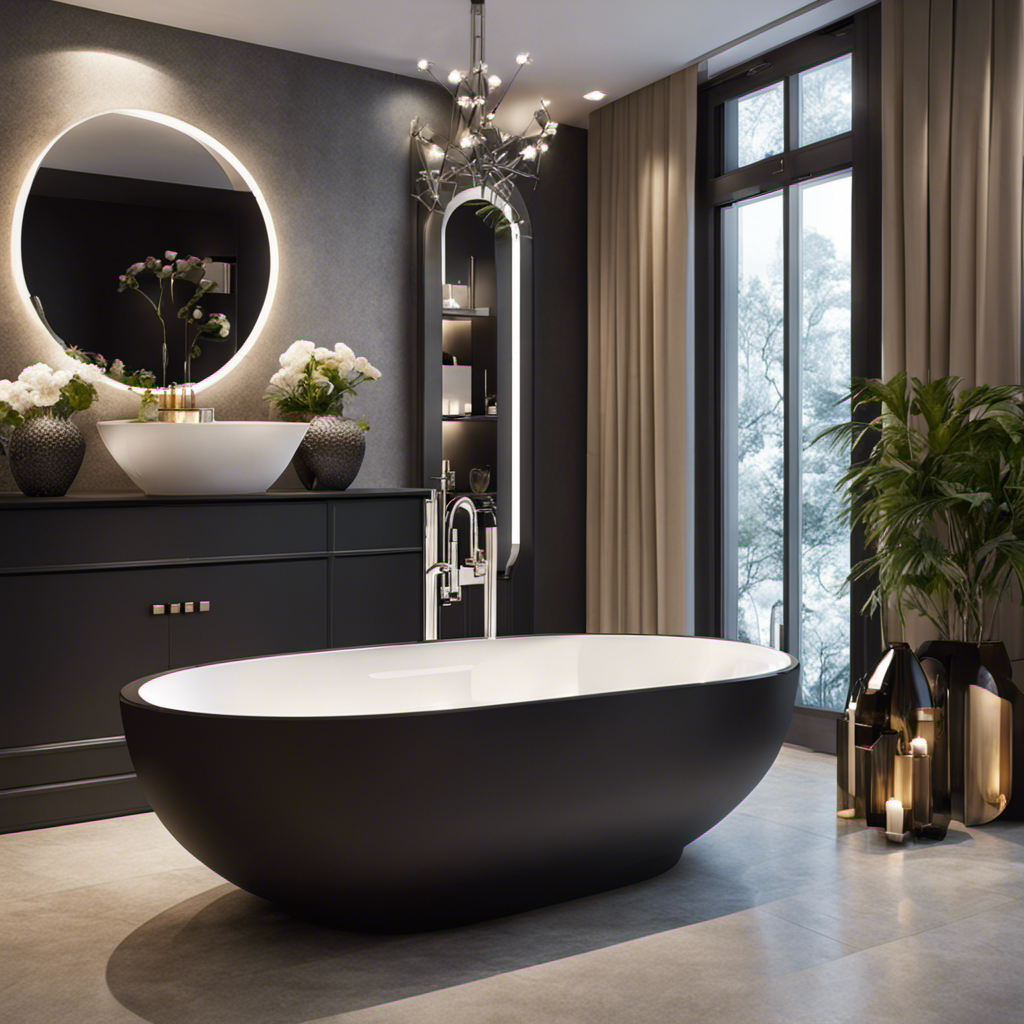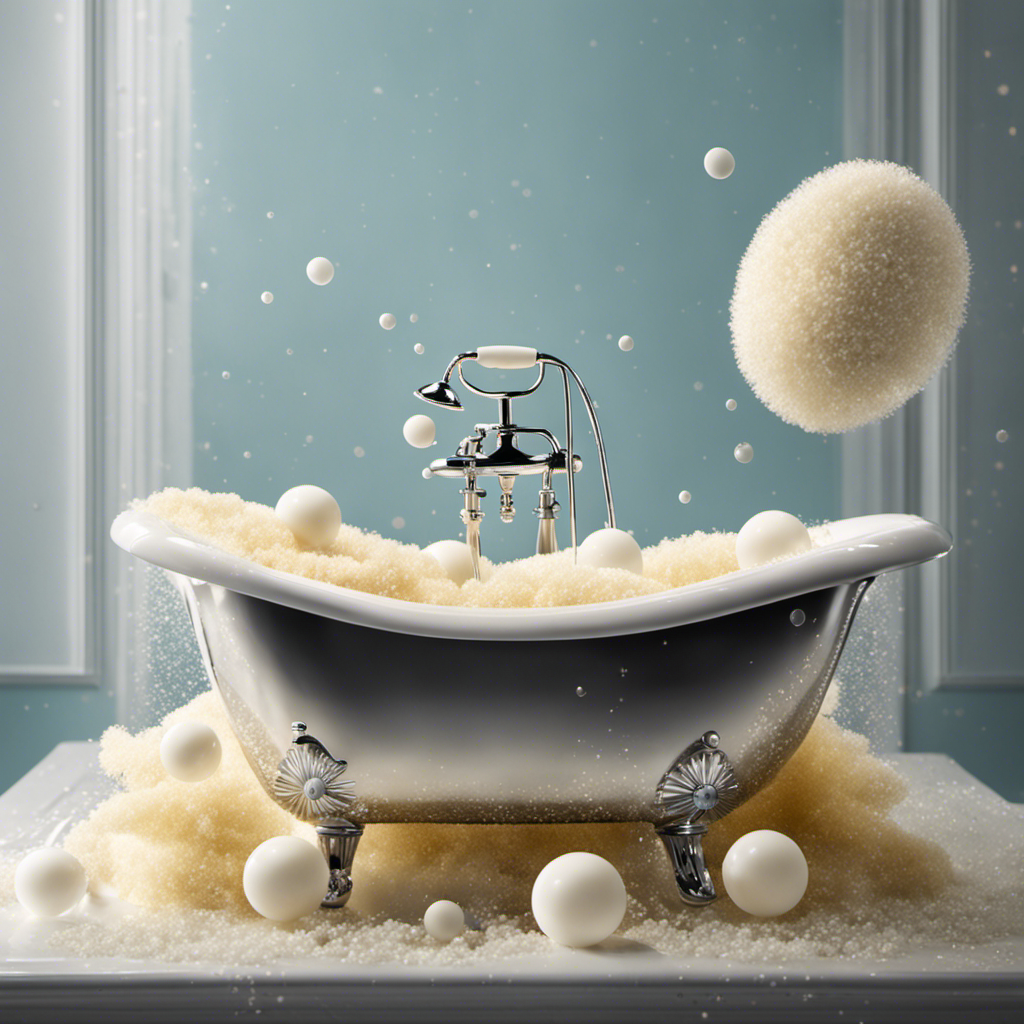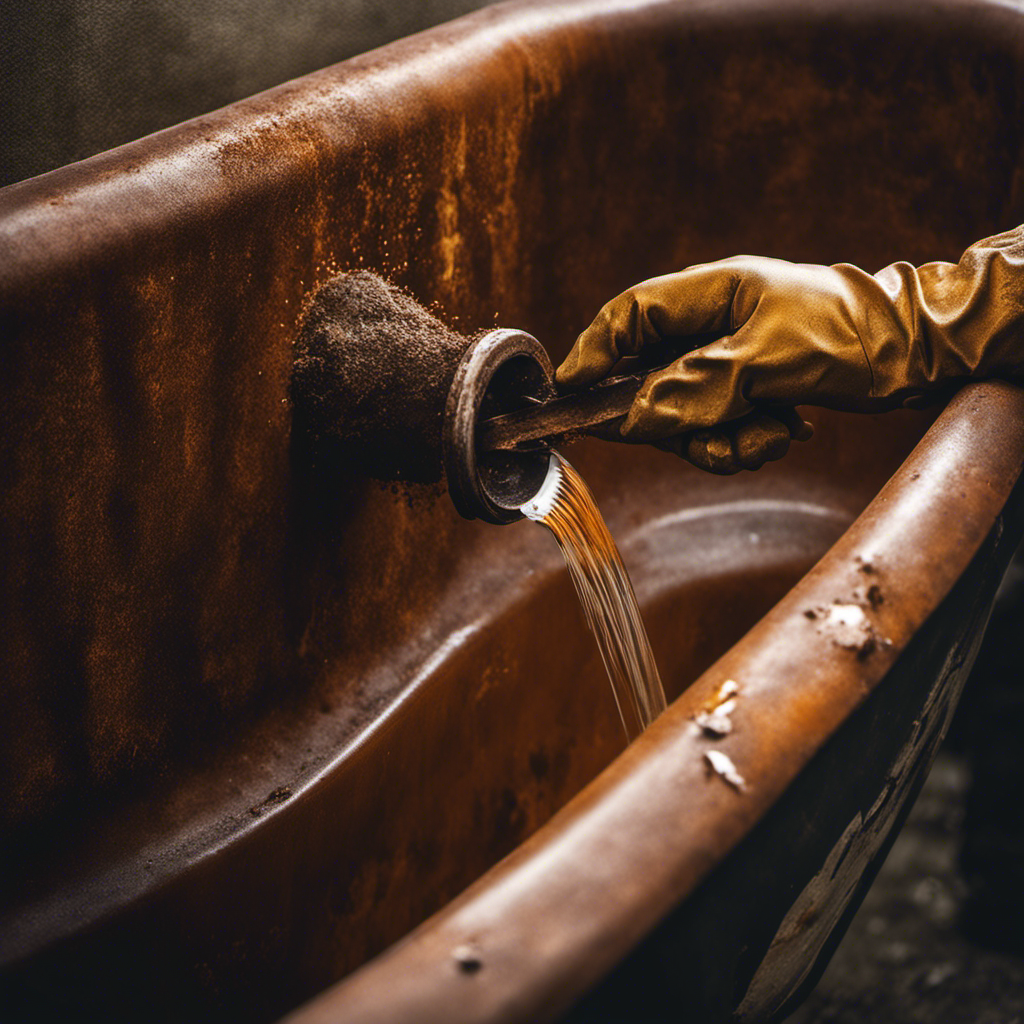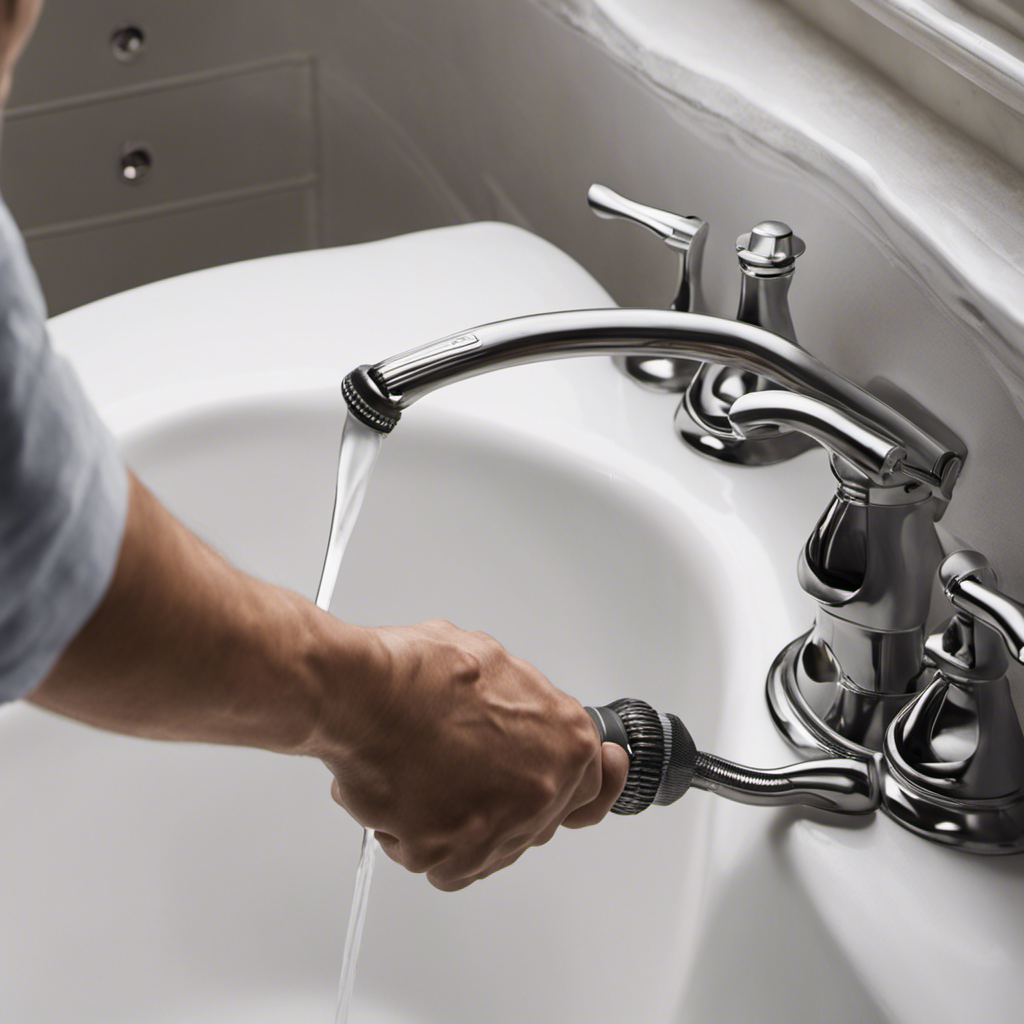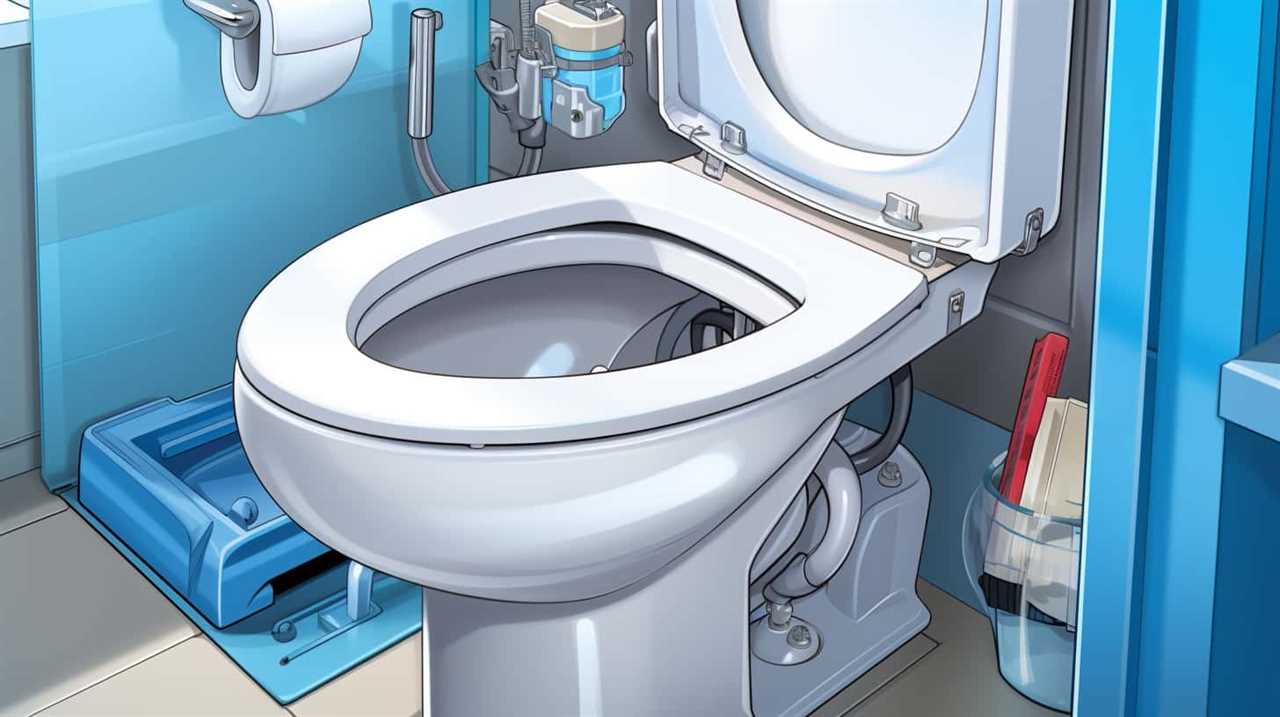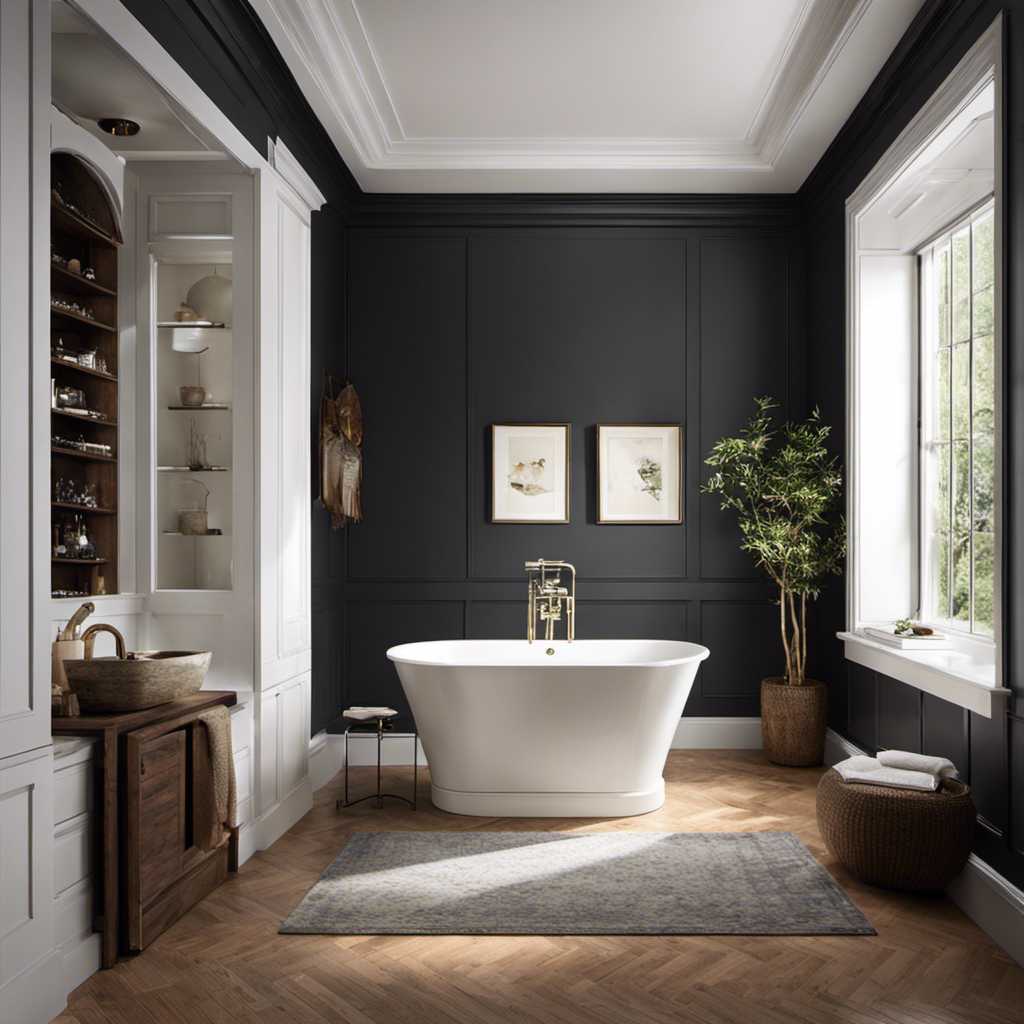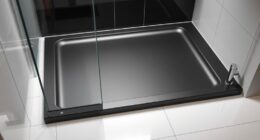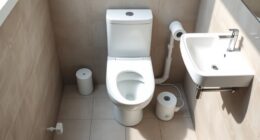As I step into the sacred sanctuary of the bathroom, I am greeted by the warm embrace of a luxurious bathtub. Choosing the perfect tub is a journey of self-discovery, a quest for the ultimate relaxation.
In this guide, I will share my expertise on how to navigate the vast sea of options. From considering size and material to exploring style and functionality, we will dive deep into the world of bathtubs.
So, grab your towel and join me on this enlightening adventure.
Key Takeaways
- Consider installation requirements and budget constraints before purchasing a bathtub
- Determine the size, style, and material that best suits your space and preferences
- Choose a durable material that is easy to maintain and clean
- Consider the desired features and functionality, such as jets or lighting, and assess their benefits and energy efficiency
Size Considerations
When choosing a bathtub, you’ll want to consider the size of the space where it will be installed. Standard dimensions are essential to ensure a proper fit in your bathroom. Measure the available space accurately, taking into account any space constraints such as walls, fixtures, or windows.
It’s crucial to choose a bathtub that fits comfortably within the allocated area without obstructing movement or causing any inconvenience. Keep in mind that larger bathtubs may require more water and heating, so it’s essential to consider your water supply and heater capacity as well.
Once you have determined the size requirements, you can move on to exploring the various material options available for bathtubs.
Material Options
When it comes to choosing the right material for your bathtub, there are several factors to consider. One of the key points to weigh is the pros and cons of different materials, such as acrylic, cast iron, and fiberglass.
Additionally, durability and maintenance play a crucial role in determining the longevity and upkeep of your bathtub.
Pros and Cons
The pros and cons of different bathtubs should be carefully considered before making a decision. When it comes to choosing a bathtub, there are several options available, each with its own advantages and disadvantages. Here are some things to consider:
-
Freestanding Bathtubs:
-
Advantages:
-
Elegant and stylish design adds a luxurious touch to the bathroom.
-
Can be placed anywhere in the room, providing flexibility in layout and design.
-
Disadvantages:
-
Requires more space compared to built-in or alcove tubs.
-
Generally more expensive than other options.
-
Built-in or Alcove Bathtubs:
-
Advantages:
-
Space-saving design, perfect for smaller bathrooms.
-
Typically more affordable compared to freestanding tubs.
-
Disadvantages:
-
Limited design options and less flexibility in placement.
-
May require additional construction work for installation.
Considering these pros and cons will help you make an informed decision and choose the bathtub that best suits your needs and preferences.
Durability and Maintenance
Durability and maintenance should be considered when deciding on the best bathtub for your needs. The longevity of a bathtub is crucial, as you want it to last for many years without needing frequent repairs or replacements. Look for materials such as acrylic or cast iron, which are known for their durability and resistance to scratches and chipping. These materials can withstand the test of time and maintain their appearance even with regular use.
Cleaning is another important aspect to consider. Opt for a bathtub that is easy to clean, with a smooth surface that resists stains and is resistant to mold and mildew. This will make your bathtub maintenance hassle-free and ensure that it remains hygienic.
Transitioning into the next section about style and design, it’s important to find a bathtub that not only offers durability and easy maintenance but also matches your desired aesthetic.
Style and Design
To find a bathtub that suits your style and design preferences, consider the different options available.
When it comes to style, the color of the bathtub plays a crucial role in creating a cohesive and visually appealing bathroom. Some popular bathtub colors include white, gray, black, and even bold colors like blue or red.
Additionally, you can enhance the style of your bathtub with the right accessories. Consider adding a bathtub tray for holding your book or glass of wine, or a bath caddy to keep your toiletries within reach. These accessories not only add functionality but also elevate the overall design of your bathtub.
Now that we’ve discussed style and design, let’s move on to the functionality features that you should consider when choosing a bathtub.
Functionality Features
When it comes to choosing a bathtub, there are several important functionality features to consider.
Size and shape are crucial factors that can affect both the comfort and the aesthetics of the tub.
Water-saving options are also worth exploring, as they can help conserve water while still providing a satisfying bathing experience.
Additionally, massage and jets can add a luxurious touch to your bathing routine, providing relaxation and soothing sore muscles.
Size and Shape
Consider what size and shape of bathtub will best fit your bathroom and personal preferences. When it comes to choosing a bathtub, there are several customization options available to suit your needs. Here are some factors to consider:
-
Size:
-
Measure your bathroom space to determine the maximum dimensions for your bathtub.
-
Consider the number of people who will be using the bathtub at the same time.
-
Shape:
-
Rectangular bathtubs are versatile and fit well in most bathrooms.
-
Corner bathtubs are great space savers and can add a unique touch to your bathroom.
When selecting a bathtub, also look for ergonomic design features that promote comfort and relaxation. These include built-in armrests, lumbar support, and contoured shapes.
Water-Saving Options
Water-saving options are available for those looking to conserve water while still enjoying a relaxing bath.
When it comes to saving water, one important factor to consider is water pressure. Low-flow showerheads and faucets are great options that can reduce water consumption without compromising the water pressure. These fixtures are designed to maintain a strong spray while using less water.
Another option is to install a water-saving aerator on your existing faucet. This simple device mixes air with the water, creating a more efficient flow.
Additionally, choosing a bathtub with a smaller capacity can help save water.
It’s also worth considering the environmental impact of your bathing habits. Taking shorter showers and avoiding excessive water usage can go a long way in conserving this precious resource.
Massage and Jets
To enhance your bathing experience, try out a bathtub with massage jets for a soothing and invigorating water therapy session. These hydrotherapy benefits can provide numerous advantages for your physical and mental well-being.
Here are some key points to consider when choosing a bathtub with massage jets:
-
Customizable Settings:
Look for a bathtub that offers adjustable jet pressure and direction, allowing you to personalize your massage experience. Some models even come with different massage programs, such as pulsating or wave-like motions, providing a variety of therapeutic options. -
Hydrotherapy Benefits:
The massage jets can help relieve muscle tension, promote blood circulation, and reduce stress and anxiety. The combination of warm water and massaging jets can also assist in alleviating pain from conditions like arthritis or muscle injuries.
Investing in a bathtub with massage jets can transform your bathing routine into a rejuvenating and therapeutic experience. Take advantage of the customizable settings and enjoy the hydrotherapy benefits it offers.
Installation Requirements
Make sure you check the installation requirements before purchasing a bathtub. The installation process can vary depending on the type of bathtub you choose. It is important to consider the plumbing requirements to ensure a smooth installation.
First, determine the location where you want to install the bathtub and check if the plumbing lines are accessible. Consider the size and weight of the bathtub to ensure it will fit through doorways and hallways.
Next, check if the plumbing system can handle the water flow and pressure required for the bathtub. You may need to consult a professional plumber to assess the feasibility of the installation.
Additionally, consider any electrical requirements if your bathtub has features like jets or lights.
Budget Considerations
Before purchasing a bathtub, it’s important to consider your budget and any financial constraints you may have. When it comes to choosing a bathtub, affordability and quality are two key factors to keep in mind.
To help you make an informed decision, here are some points to consider:
-
Affordability vs. quality:
-
Assess your budget and determine the maximum amount you can spend on a bathtub.
-
Research different brands and models to find the best balance between affordability and quality.
-
Comparing prices and features:
-
Look for features that are important to you, such as size, material, and additional functionalities like whirlpool jets or built-in lighting.
-
Compare prices across different retailers or online platforms to find the best deal without compromising on the quality.
Conclusion
After carefully considering the size, material, style, functionality, installation requirements, and budget, I have discovered that choosing the perfect bathtub is like finding a hidden treasure amidst a vast ocean.
It requires patience, research, and a keen eye for detail. Just like a skilled captain navigating through rough waters, you must navigate through various options to find the one that suits your needs and preferences.
So, set sail on this exciting journey and let the bathtub of your dreams become the luxurious oasis of relaxation you deserve.
